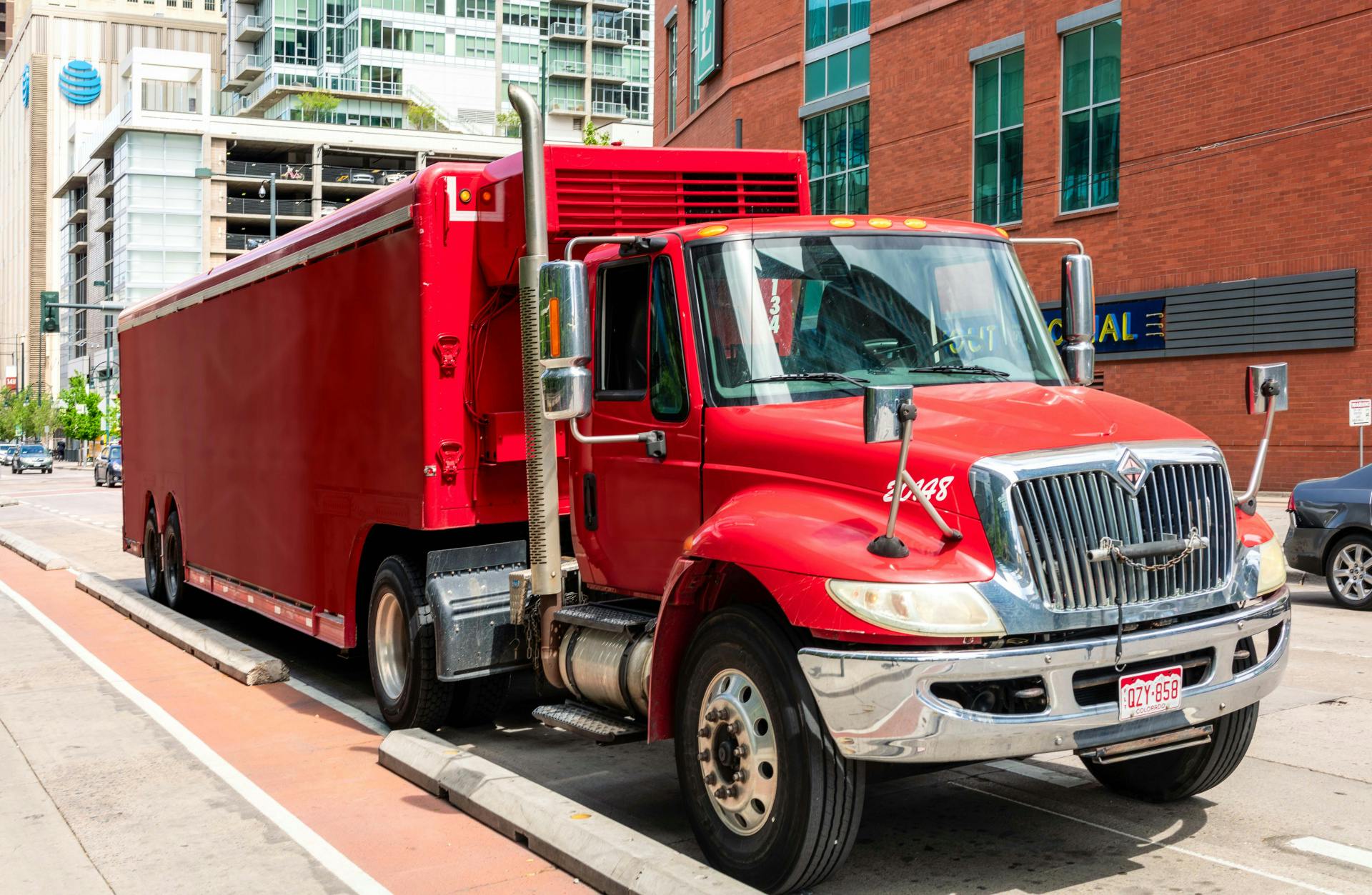Dynamic Planning Turns Logistics into Competitive Advantage
In an exclusive interview, Stefan Huntemann, SVP Supply Chain Planning Europe at ORTEC, explains how dynamic planning, transparency, and human-aligned automation can help retailers and manufacturers overcome legacy systems and gain a competitive edge in logistics.

In the logistics landscape, predictability is scarce and complexity is pervasive. Supply chain executives grapple daily with volatile demand, shifting regulations, labor shortages, and fragmented data. Stefan Huntemann, Managing Partner at ORTEC, believes the solution isn’t simply to add more technology but to build deeper, human-informed intelligence into existing logistics systems.
“Transparency is fundamental,” Huntemann states plainly. “On the manufacturing side, transparency means having access to real-time and predictive information throughout the entire logistics chain. So it’s not just information on what’s happening now, but what’s likely to happen tomorrow and beyond.”
Huntemann emphasizes why this is crucial for businesses today: “Manufacturers rely heavily on timely, cost-efficient logistics. The sooner they have accurate information, the earlier they can plan, from warehousing to deliveries. Early visibility lets companies act proactively rather than reactively. That makes all the difference in today’s highly volatile market.”
Without this transparency, companies default to fixed, static distribution methods. “In practice,” Huntemann explains, “this means running the same routes every day, regardless of demand fluctuations. That’s safe and predictable, but it’s also inefficient. This approach often leads to wasted resources, higher costs, and missed opportunities for optimization.”
Transparency is fundamental. Not just about what’s happening now, but what's likely to happen tomorrow and beyond.
Dynamic Planning in Logistics: Real-World Use Cases
Dynamic planning chooses a different approach, and Huntemann clarifies how that works in practice: “Dynamic planning is about adjusting logistics both operationally in real time and strategically over seasons and market changes.” To illustrate the difference dynamic planning can make, Huntemann uses the example of a major confectionery manufacturer whose logistics operations change drastically with seasonal demand fluctuations. “Their pre-holiday logistics planning looks nothing like their summertime operations. This shows how adaptive logistics planning can become a competitive advantage.”
The manufacturer in Huntemann’s example uses dynamic planning to proactively adjust their logistics network. “It includes demand forecasts, labor and capacity constraints, external disruptions, and even marketing initiatives,” says Huntemann. “It’s agile without sacrificing efficiency. You don’t overcommit or underutilize resources. During peak seasons, they even ration product distribution based on predictive modeling rather than traditional reactive ordering. It’s supply-driven demand planning, only feasible when you understand your logistics limitations and capabilities ahead of time.”
Early visibility lets companies act proactively rather than reactively.
Overcoming Legacy Systems in Supply Chain Logistics
Legacy systems can make it more difficult to reach such understanding, which brings Huntemann to another critical issue: awareness at the executive level. “It varies significantly. Some companies are very advanced, but others still operate as if it’s 2005. Believe it or not, some major retailers manage complex logistics using spreadsheets.”
He shares another example, this time of a prominent clothes retailer that operated with fragmented spreadsheet-based logistics, despite having hundreds of stores across multiple brands. “This approach severely limited their ability to respond swiftly to market changes and demand shifts. They’re currently undergoing a significant transformation towards integrated data-driven solutions. It’s a stark reminder of how legacy systems hold companies back from achieving real-time responsiveness and flexibility.”
Logistics isn’t just moving goods; it’s managing interdependent constraints.
Resolving Goal Conflicts in Logistics Optimization
What makes logistics optimization so challenging? Huntemann doesn’t hesitate: “Goal conflicts. Logistics isn’t just moving goods; it’s managing interdependent constraints. Suppose a supermarket orders heavy jars, fragile chocolate products, and refrigerated items. Ideally, you’d plan loading for efficient unloading, but you can’t stack heavy jars atop delicate chocolates or combine refrigerated items with room-temperature goods without special zoning.”
He continues: “Then consider delivery constraints. Some stores require low pallets, others accept higher ones. Some locations are in restricted city centers, necessitating smaller or electric vehicles. Scheduling also varies: certain customers receive deliveries only at specific times. Every decision creates ripple effects. You could manually manage this for a single truck, maybe, but when dispatching hundreds daily, human planners simply can’t handle all the variables simultaneously. They fall back on heuristics: ‘We’ve always done it this way.’ It works until it doesn’t.”
Huntemann stresses the importance of overcoming these issues: “To truly optimize logistics, companies must clearly identify these goal conflicts and tackle them systematically with advanced analytics and intelligent software. Ignoring these complexities perpetuates inefficiency.”
Our tools preserve human intuition while adding computational power.
Human-Aligned Automation in AI-Driven Logistics
In managing these complexities, technology. and specifically AI, has a role to play. “Our machine-learning approach analyzes historical dispatcher behaviors, capturing their decision-making nuances,” Huntemann says. “We train the model on actual human actions, turning human expertise into automated processes. We call this ‘human-aligned automation’. Initially, it replicates dispatcher logic and only later moves toward pure optimization. You can’t optimize what you haven’t documented or understood. Our step-by-step method – observe, imitate, enhance – ensures the system feels intuitive and trustworthy to dispatchers.”
The cultural acceptance of these technologies remains a challenge, Huntemann admits: “Dispatchers often view advanced tools, especially automation, as undermining their expertise. These professionals have decades of intuitive, experiential knowledge. When systems recommend unfamiliar routes, pushback occurs. That’s not irrational, because systems traditionally lack critical human context.”
To solve this, ORTEC’s machine-learning systems deliberately integrate human preferences. Huntemann explains: “Our tools don’t just calculate the most efficient routes; they incorporate context, such as why a specific driver always handles a particular customer. Maybe that driver holds keys to after-hours locations or maintains better relationships. Human-aligned automation accounts for this, preserving human intuition while adding computational power.”
Logistics will actively shape strategy, enabling companies to gain profound operational insights and maintain competitive advantages.
Seamless SAP Integration for Supply Chain Optimization
Why is integration with existing ERP systems critical? “SAP is the global ERP standard, especially for our larger clients,” Huntemann explains. “Our solutions aren’t merely interfaced; they’re embedded directly within SAP. We build functionalities within SAP’s own language, ABAP, so our tools appear as native SAP transactions. Users trigger and manage complex optimization scenarios seamlessly within the SAP environment, with no middleware required.”
AI-Driven Forecasts for Demand and Logistics Planning
Huntemann sees logistics evolve into fully integrated and predictive ecosystems: “The logistics networks of tomorrow will anticipate demand shifts and resource availability, using real-time analytics and AI-driven forecasts. Logistics will no longer merely respond – it will actively shape strategy, enabling companies to gain profound operational insights and maintain competitive advantages. Businesses that master this integration of intelligence and action will set the benchmarks for supply chain excellence.”
About Stefan Huntemann – ORTEC Supply Chain Planning Expert
Stefan Huntemann is SVP Supply Chain Planning Europe of ORTEC. A graduate in industrial engineering with a focus on transport and logistics, he co-founded Logiplan in 1994, which later became part of the international ORTEC Group. Today he drives the company’s strategic development in SAP and non-SAP solutions, focusing on data-driven logistics optimization and representing ORTEC at major industry events.
Contact us to discuss your operational challenges and business goals.
Let's talk about how dynamic planning, transparency, and human-aligned automation can help your business overcome legacy systems and gain a competitive edge in logistics.
Smart Decisions Start with the Right Insights
Stay informed with expert insights, industry trends, and practical strategies that help you stay ahead. Subscribe now to get the latest updates straight to your inbox.
Learn More About Our Industry Solutions

Manufacturing & Finished Goods
Reduce costs and increase efficiency with optimization for manufacturers and consumer goods.
↪ Explore

Foodservice & Beverage Distribution
Conquer the Final Mile with optimization solutions for foodservice and beverage distributors.
↪ Explore

Retail & Wholesale Distribution
Reshape your retail, e-commerce, and wholesale supply chain distribution operations.
↪ Explore

Online Grocery and Retail Home Delivery
Optimize routing and delivery to offer better customer service and gain higher profitability.
↪ Explore

Transportation Services
Manage loading, routing, and logistics efficiency to transform your transportation operations.
↪ Explore

Energy - Fuel & Oils Distribution
Simplify complex logistics for downstream energy distribution of fuels, oils, and chemicals.
↪ Explore